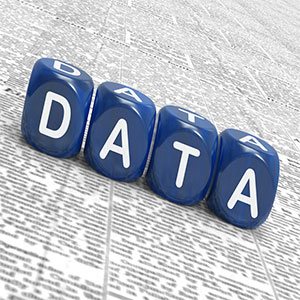 Many organizations focus their data governance programs on improving their data for analytical purposes. A problem they are running into is that their data has been left unattended for many years leading to less than desired levels of data quality and an inability to integrate the data to implement effective analytical capabilities. Most often, the solution to this problem begins with improving the quality of data that is defined, produced, and used within their organization.
Many organizations focus their data governance programs on improving their data for analytical purposes. A problem they are running into is that their data has been left unattended for many years leading to less than desired levels of data quality and an inability to integrate the data to implement effective analytical capabilities. Most often, the solution to this problem begins with improving the quality of data that is defined, produced, and used within their organization.
As I mentioned in my last column focused on achieving “good data” through improved data definition, the quality of data available to support analytical capabilities is a sore subject for many organizations. Every organization wants to be able to predict customer behavior, improve efficiency and effectiveness of their supply chain, reduce production costs, … or whatever the business use of “good data” may be.
Remember … It’s All in the Data.
This column is the second in a three-part series that addresses what it takes to achieve “good data.” For this column, I will focus on the second of the three areas where organizations can simply and logically break down the activities that are required to achieve “good data.” I mentioned these activities in the first column.
The three areas include:
- Improving Data Definition
- Improving Data Production
- Improving Data Usage
For the next column I will focus on data usage as the final value-driven end that we pursue. Stay tuned for the final column of the series in a near future issue of TDAN.com.
Improving Data Production
Begin with the Producer’s Understanding
The quality of data production typically depends on two things: 1) the quality of the data definition and 2) the data producer’s understanding of the data definition and how the data will be used by the organization. For most organizations, there are people that can provide business definitions of the data and fully explain how the data will be consumed. One core responsibility of the data governance program is to give these knowledgeable people a role in governing the data by providing a means for them to record this information, known as metadata, and make this information available to anybody that has an interest.
It can also be the data governance program’s role is to communicate effectively with the data producers and get them to care about the quality of the data they produce. Several considerations for getting data producers to care is to provide them with definitions of the data they are producing in business terms they understand, provide them with knowledge of how and when to enter or code specific data in specific ways, and to provide them with insights into the outcomes of producing data correctly and incorrectly.
By improving data producers’ understanding of the data they are producing, organizations are more likely to achieve “good data.”
Apply Accountability for Data Production
When it is a challenge to get data producers to understand and care about the data they are producing, organizations must enforce levels of accountability for the quality of the data that is being produced. Accountability must start with front-line data producers but must extend into the management or supervision of the people that are producing data, and sometimes even the senior leadership of the people that are producing data. To apply formal accountability requires having consequences for not being able to produce quality data and that senior leadership is bought into the reason and the need for quality data production.
I define data stewardship as the formalization of accountability for the management of data. I have been known to say that, in order for data governance to be successful with full coverage of the organization, potentially everybody that defines, produces, and uses data as part of their job must have formal accountability for that relationship. Therefore, everybody is a data steward.
To achieve “good data” requires that people that produce the data, including people that are responsible for acquiring data from outside of the organization, must be held accountable for the quality of the data that will be consumed for operational or decision-making purposes.
Assure Data Production Quality Control
Besides changing people’s behavior of how they produce data, governance programs can have an impact on the quality of data production by working with IT, specifically application developers or package deployers to assure that data is systematically and completely checked for quality as it is being entered into systems or as the data enters the organization from outside. Data governance can assure that data dependencies and data standards are well defined and share with the technical function of the organization that can impact change.
Achieving “good data” is a result of implementing successful data governance. Improving data definition, sharing the definition with the data producers, and technically implementing means of collecting “good data” are three of the ways that improving data production assures high quality data.
Conclusion
As I mentioned earlier, this column is the second of three that are focused on assisting organizations to achieve “good data.” Producing high quality data that can be used to improve decision-making and analytical capabilities is a result of governing all three of the definition, production and usage of the data.
Look out for the final column of this trilogy where I will focus on achieving “good data” through improving how data is used by the organization. A quick hint is that it has a lot to do with improving the definition and production of the data. It’s All in the Data.
